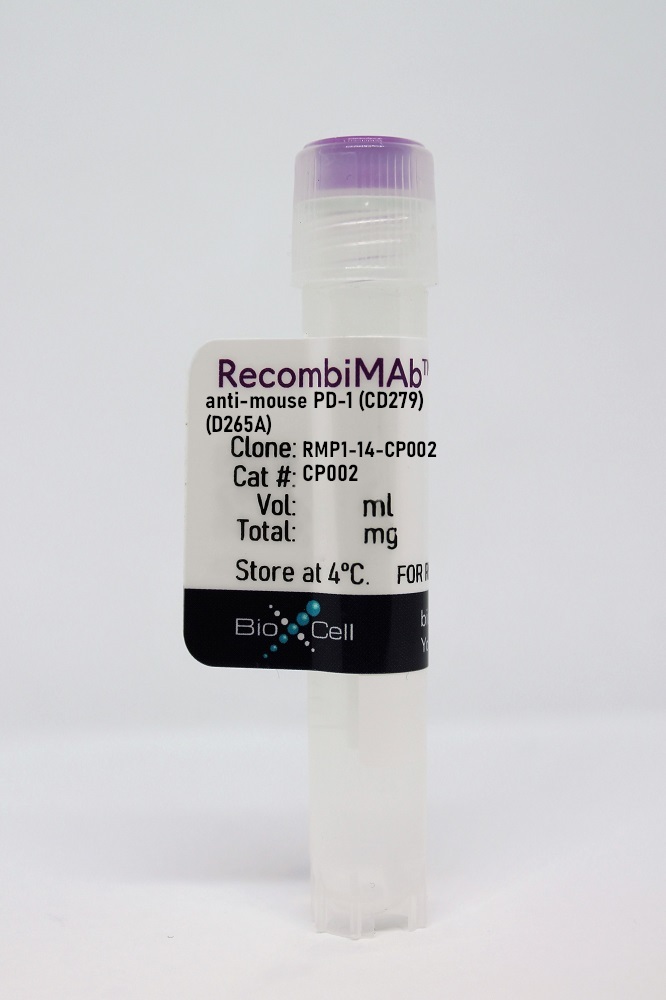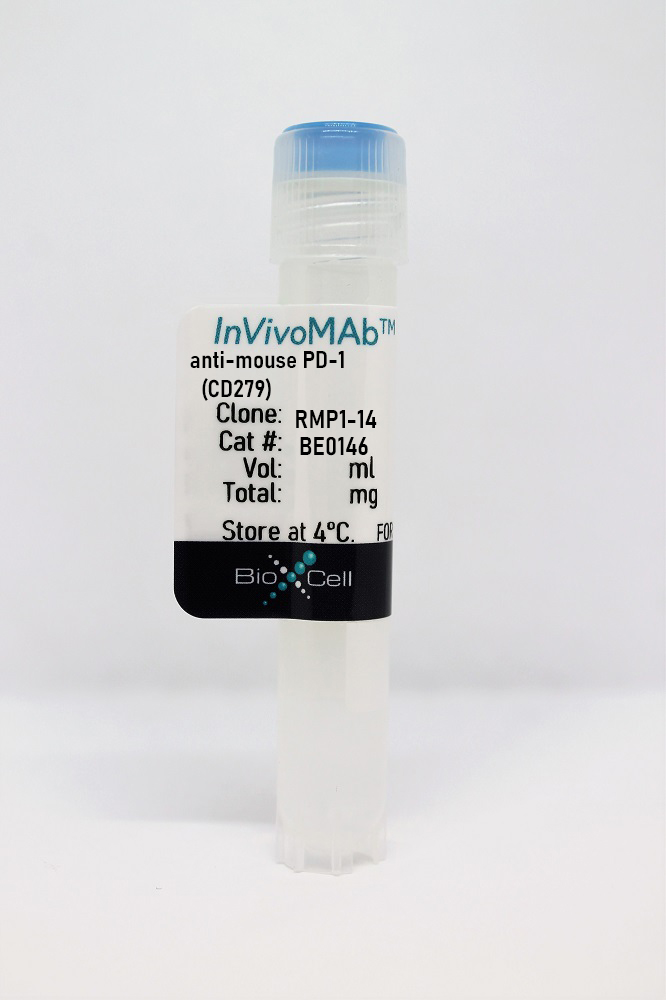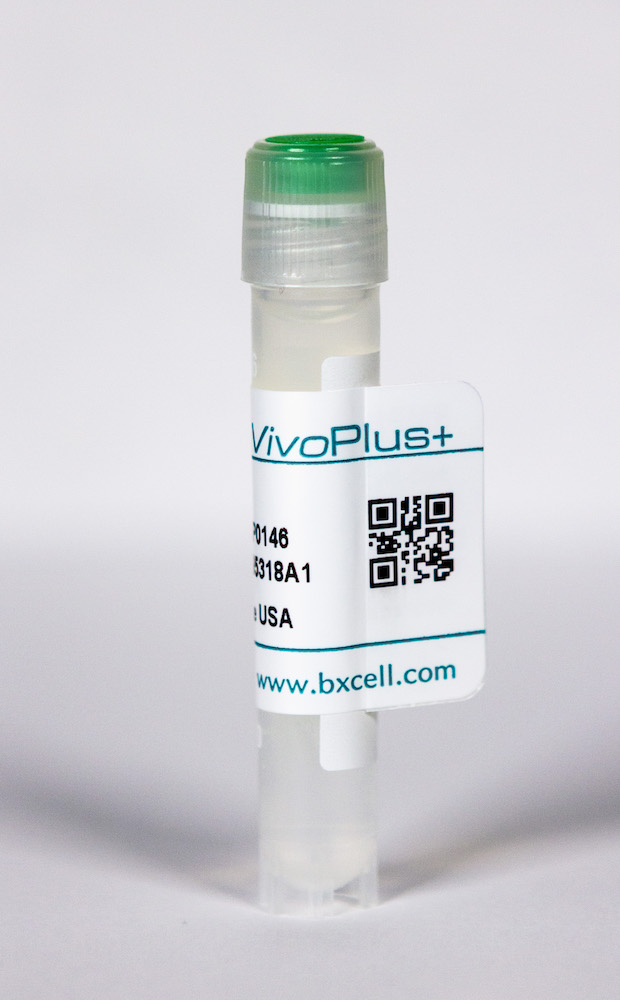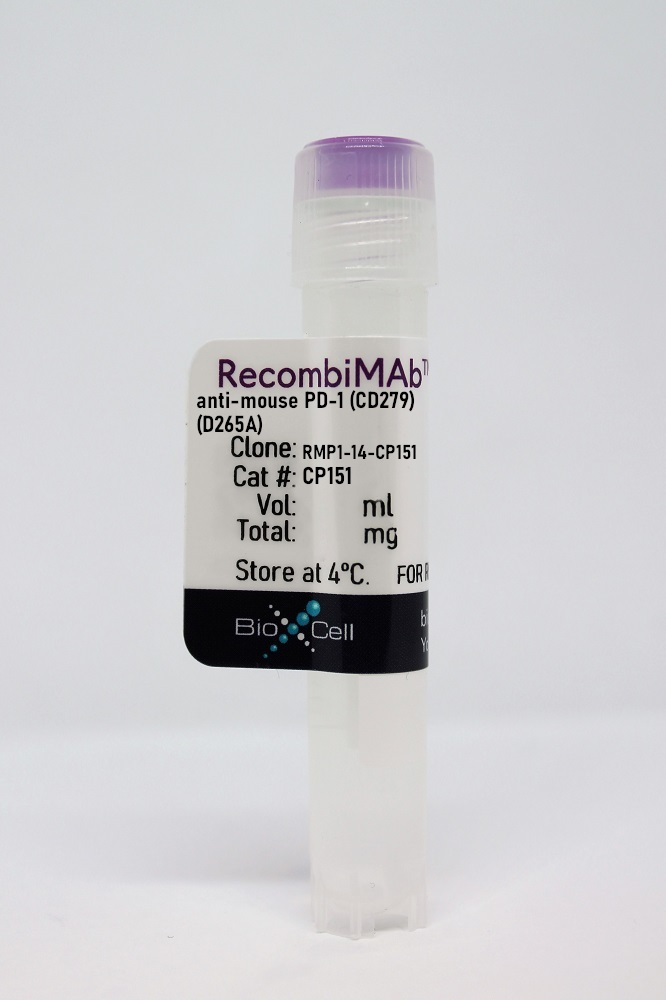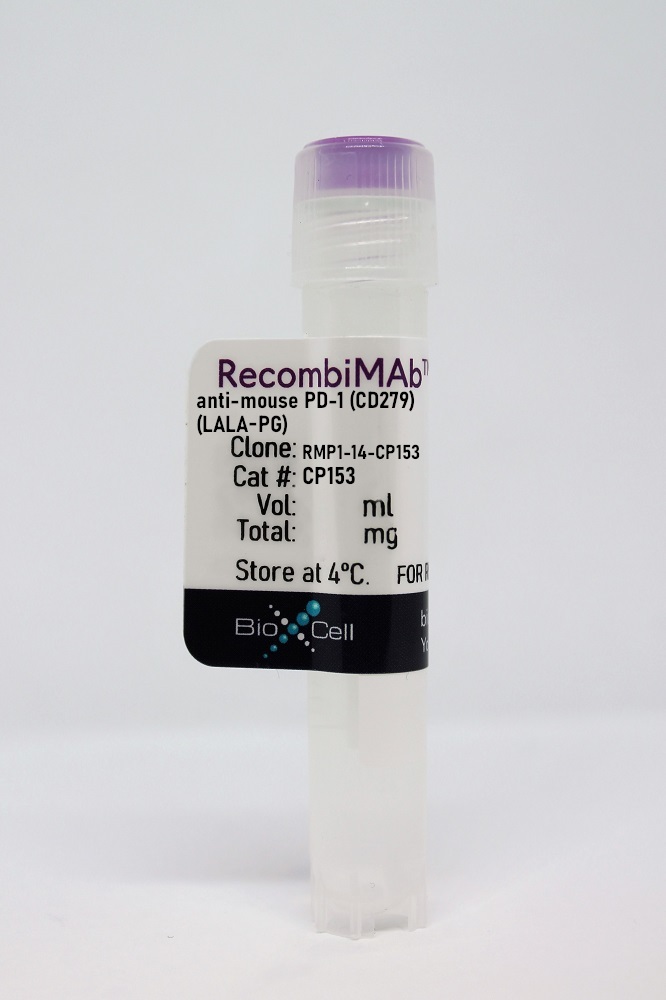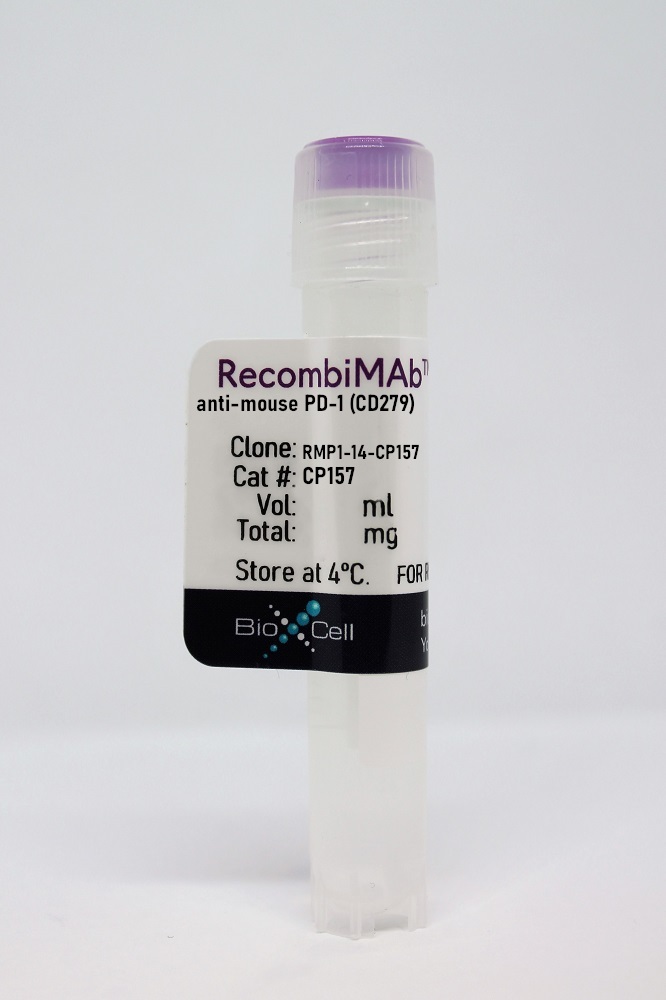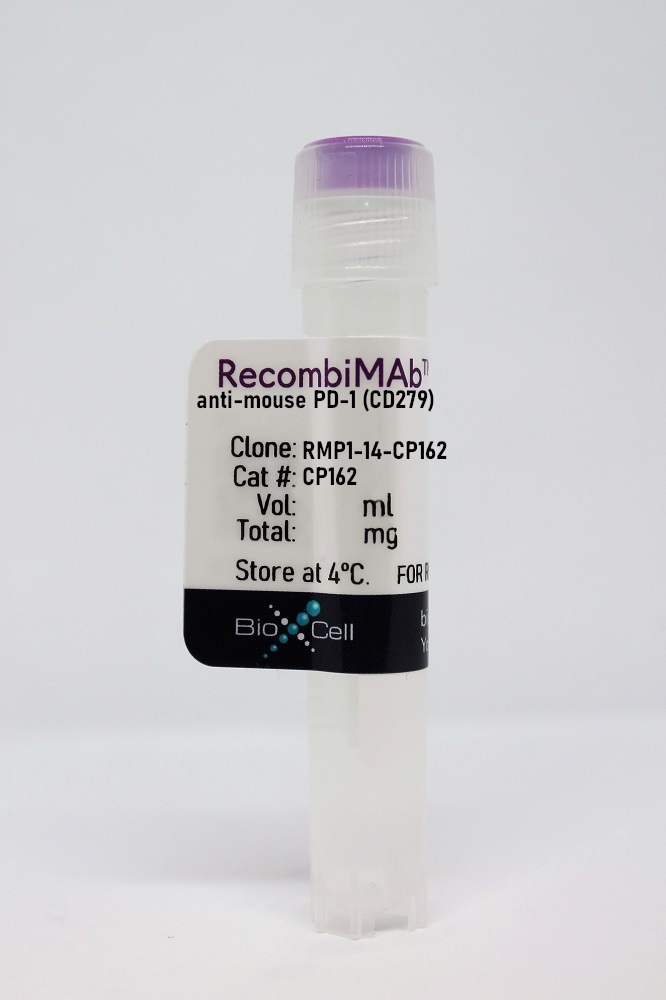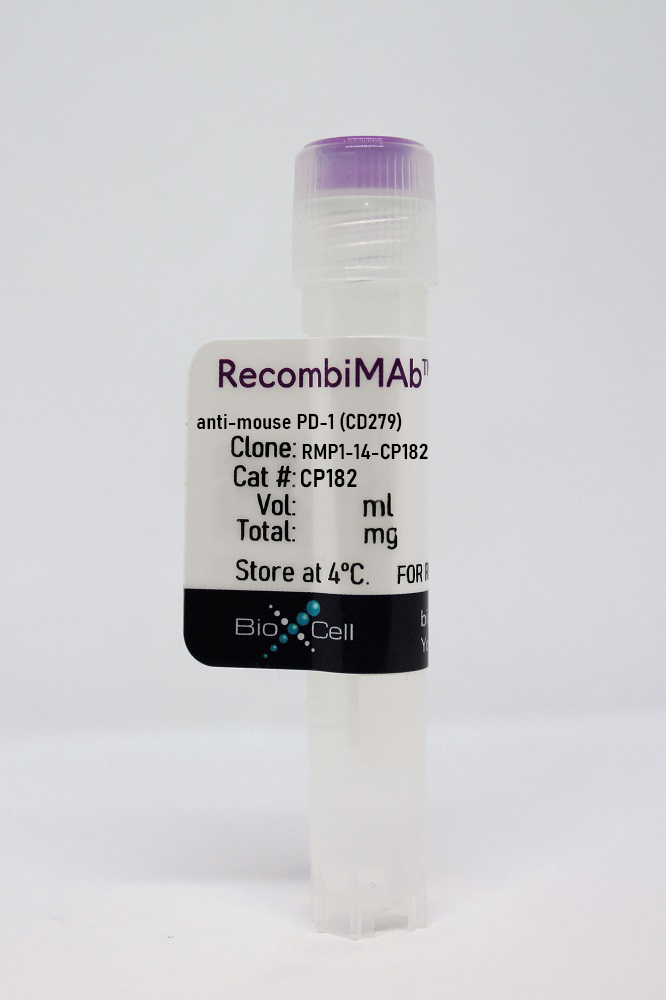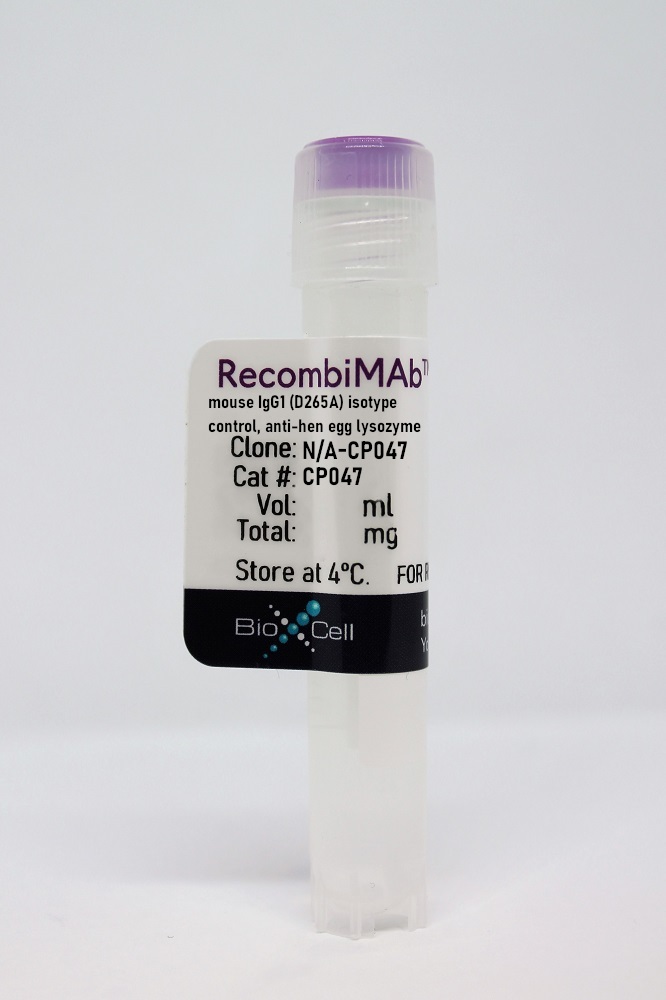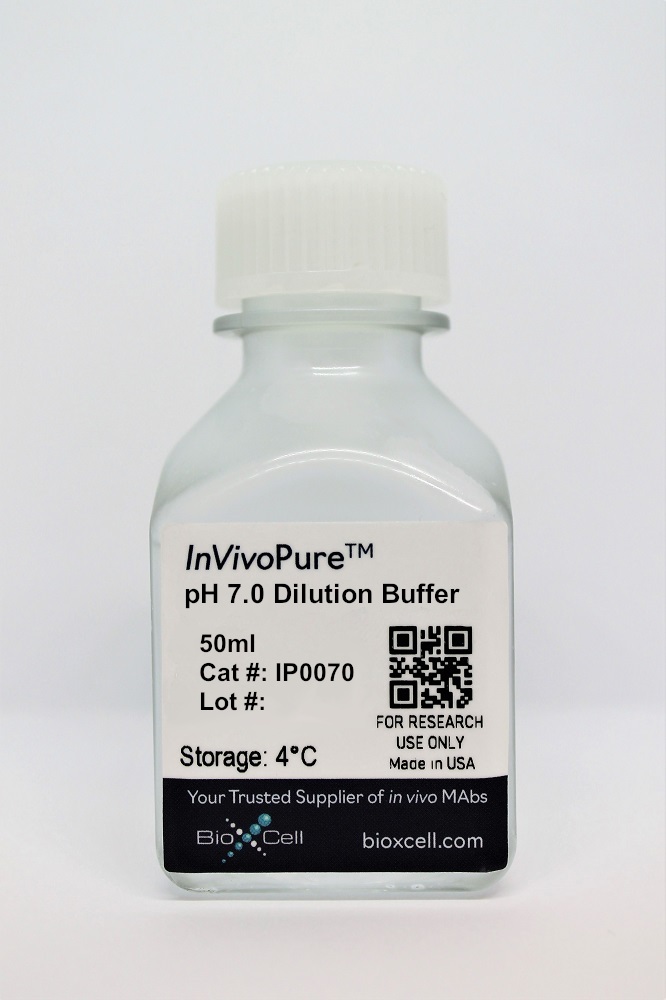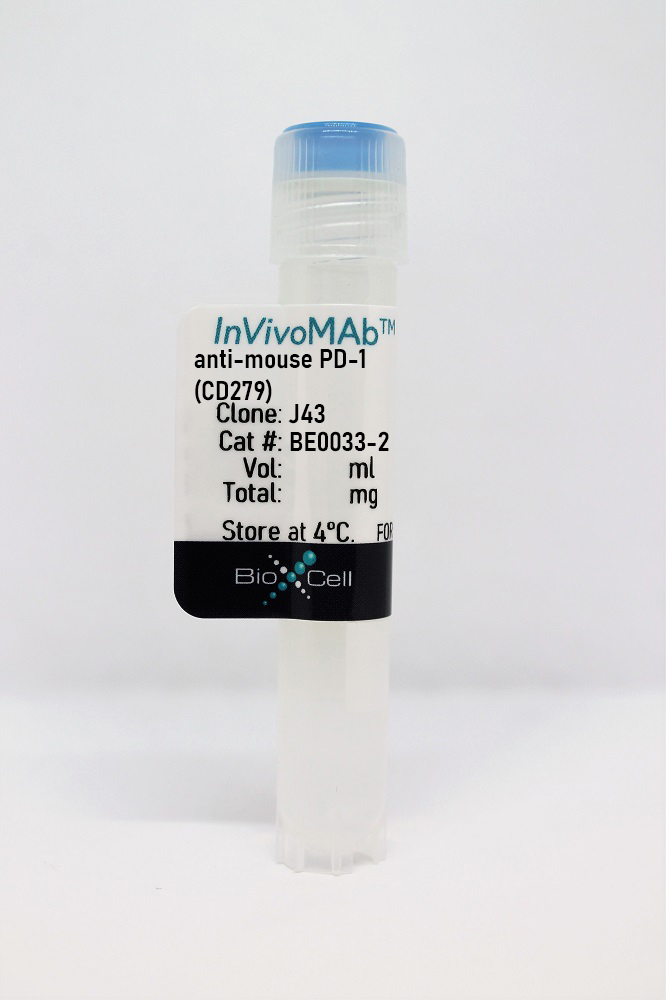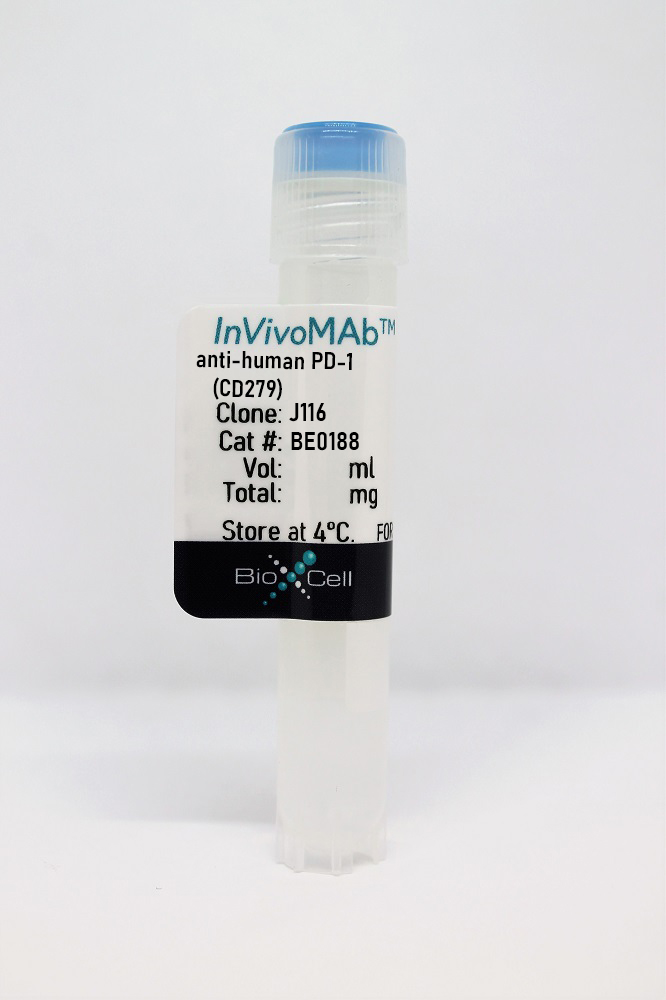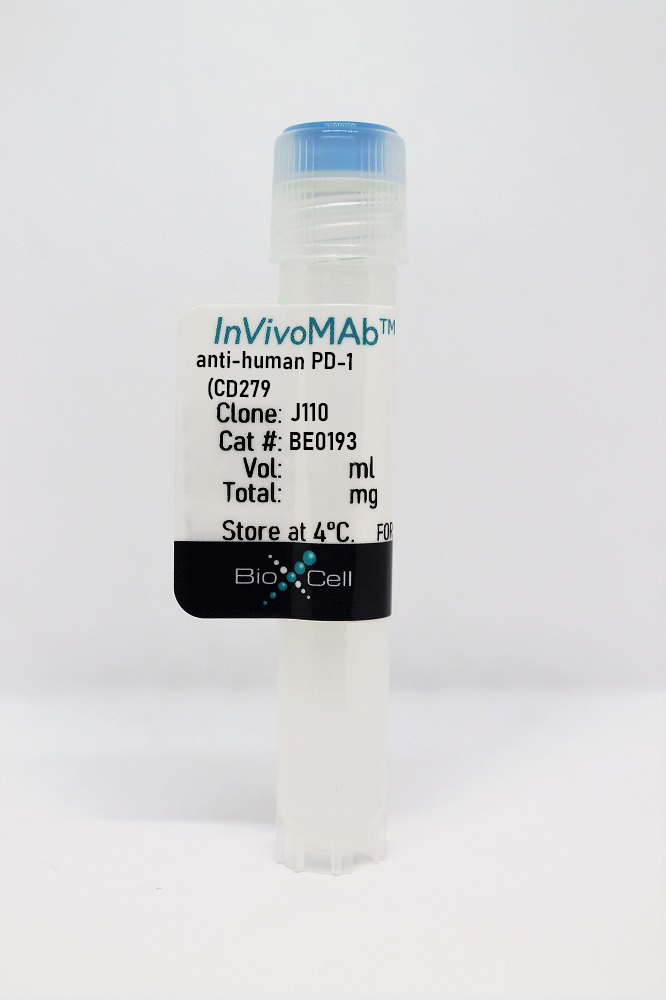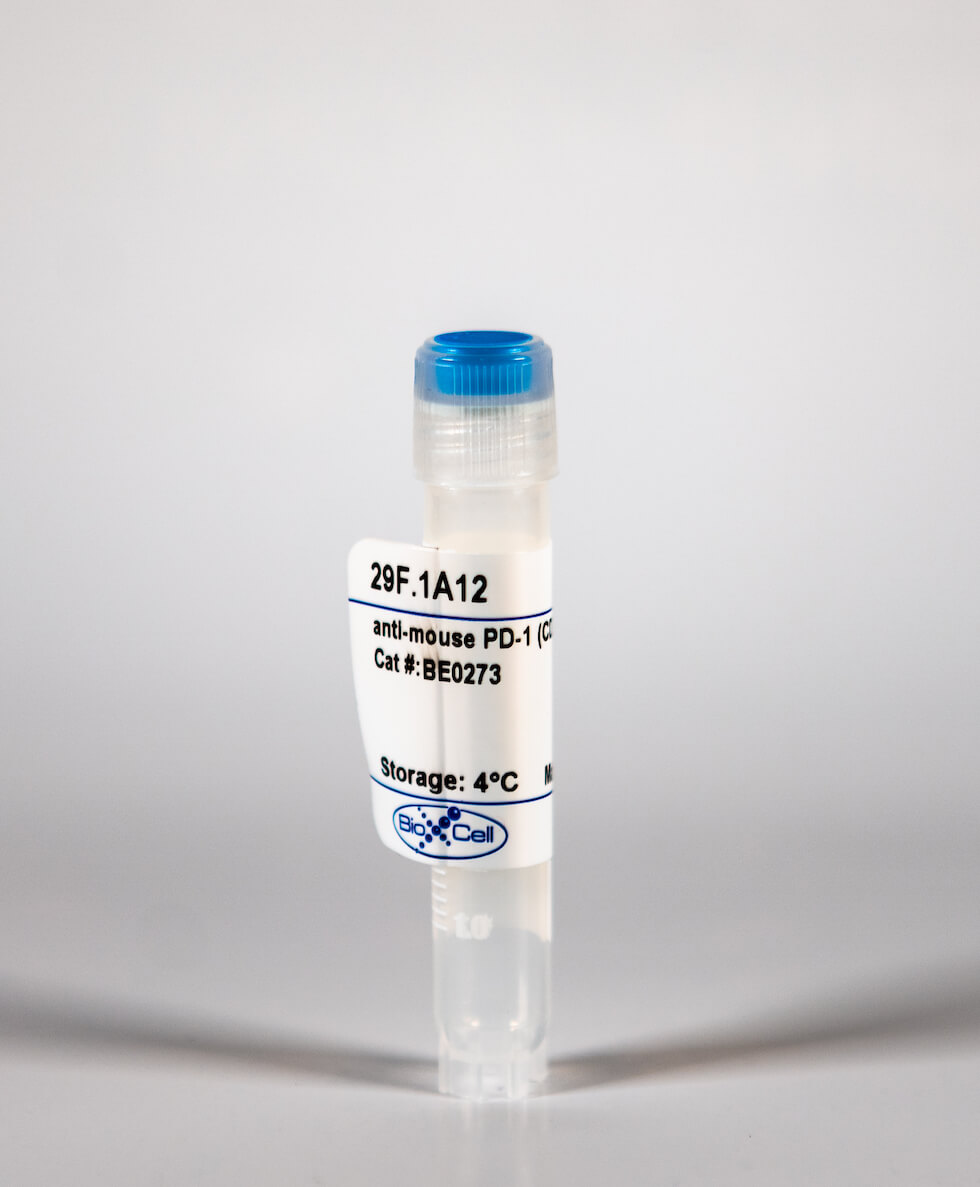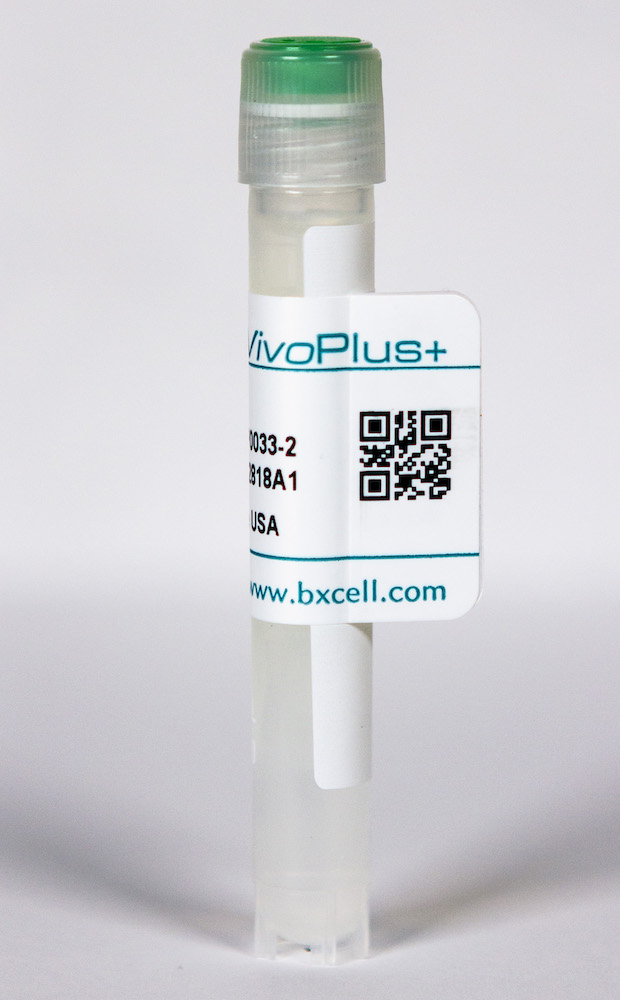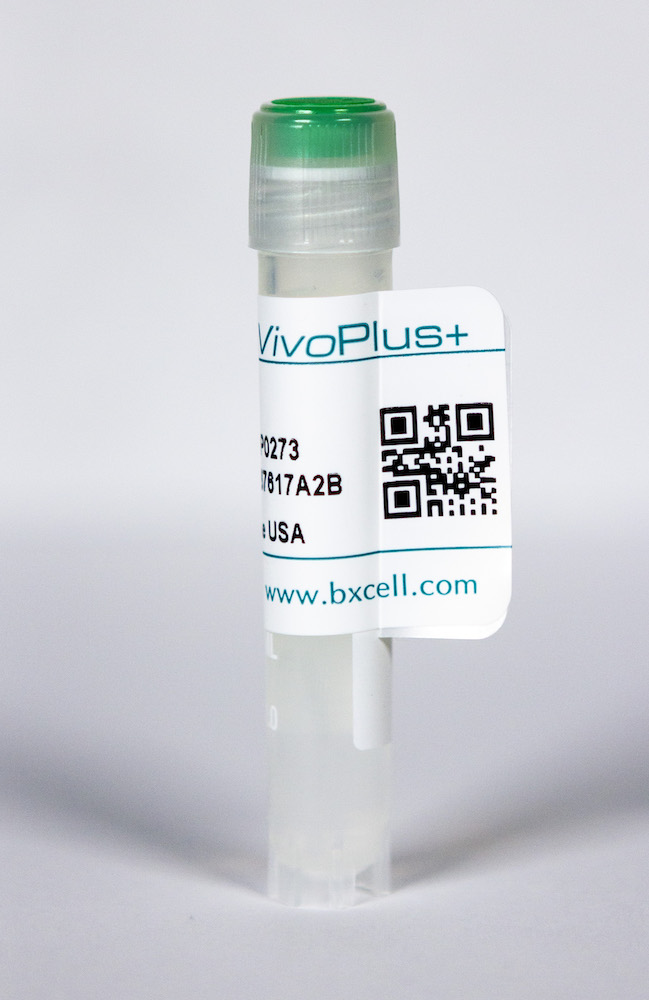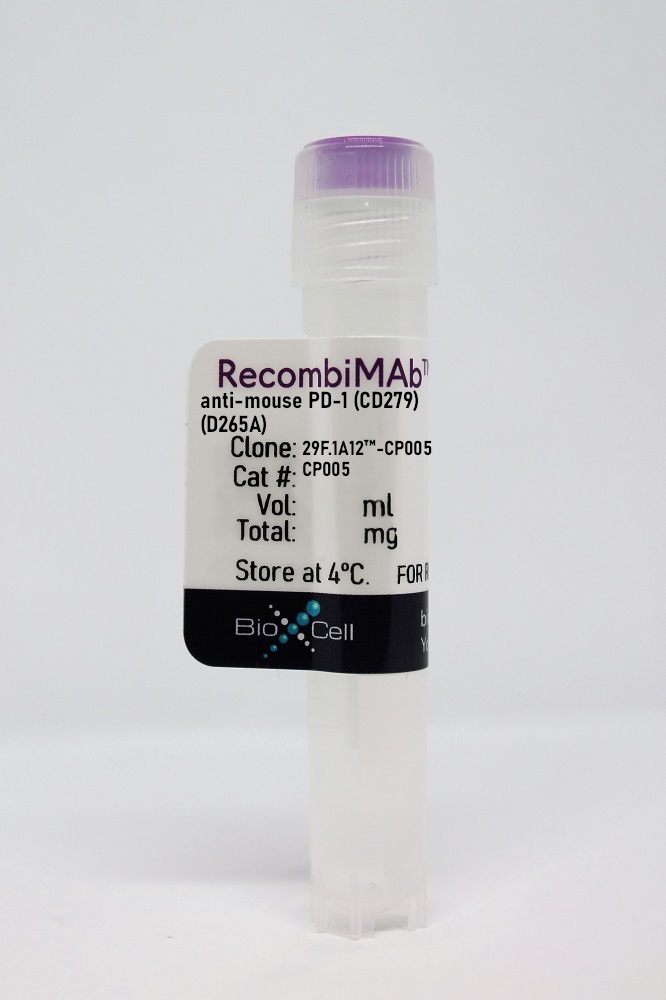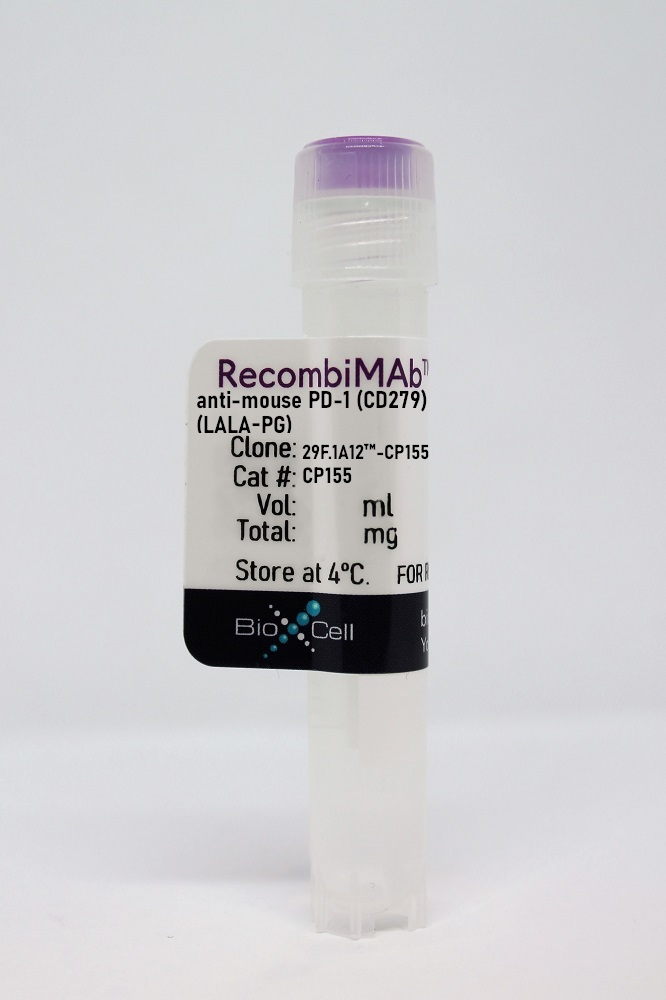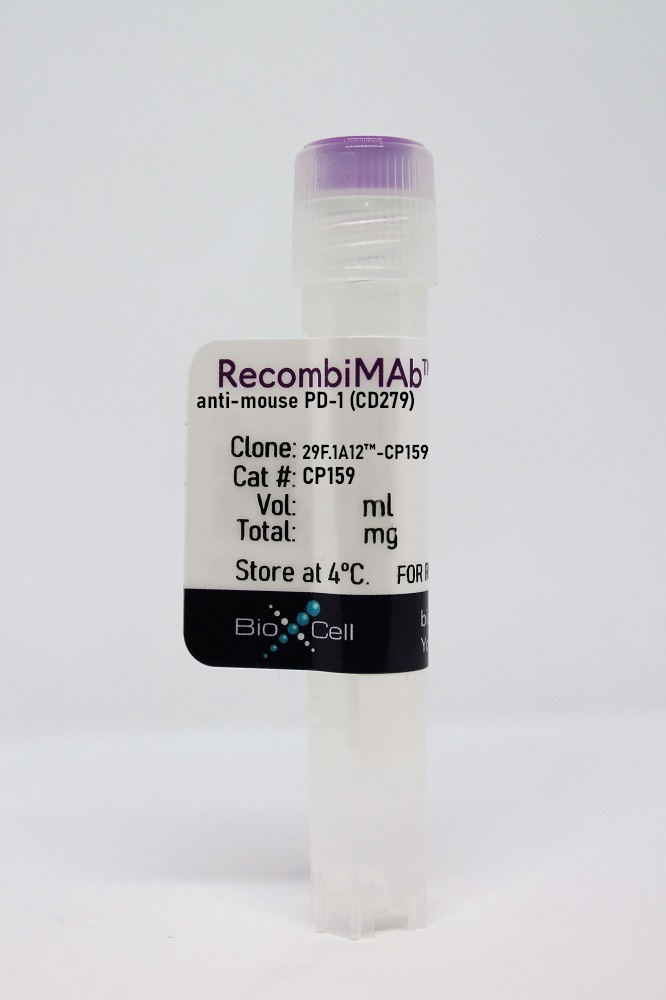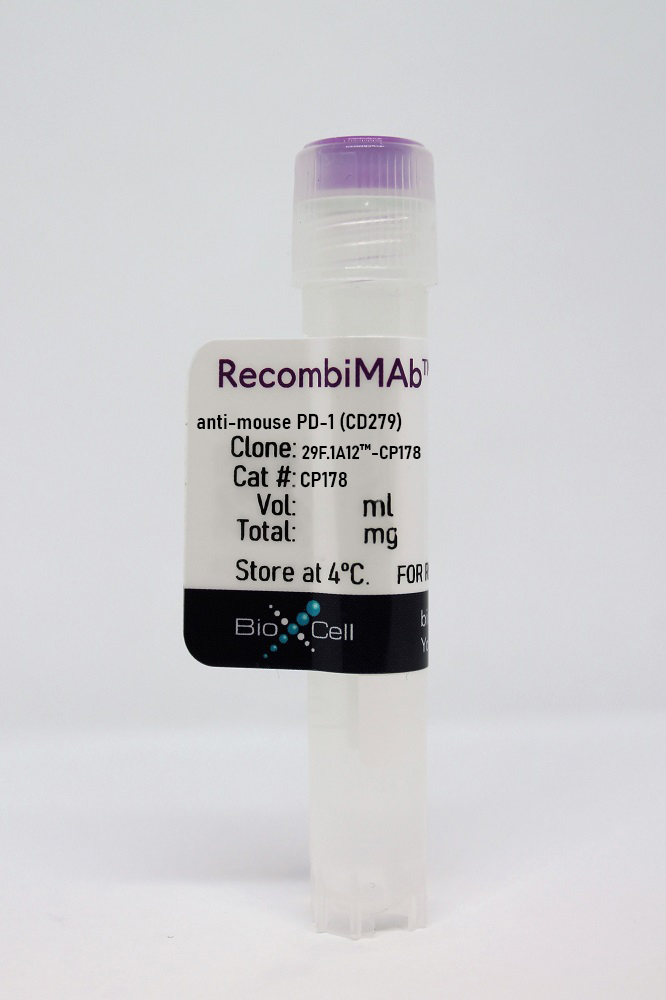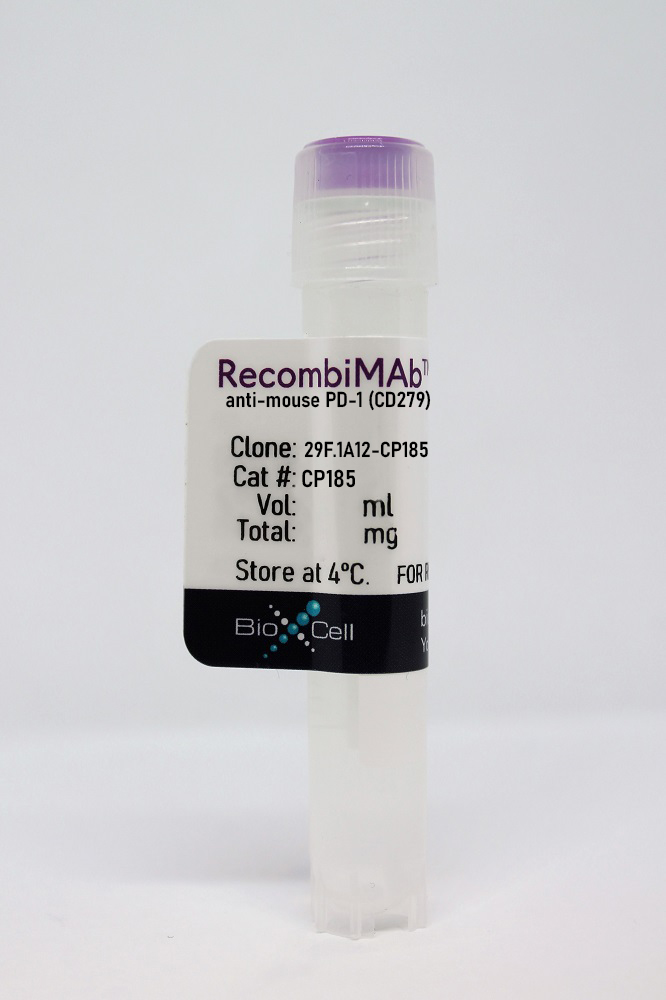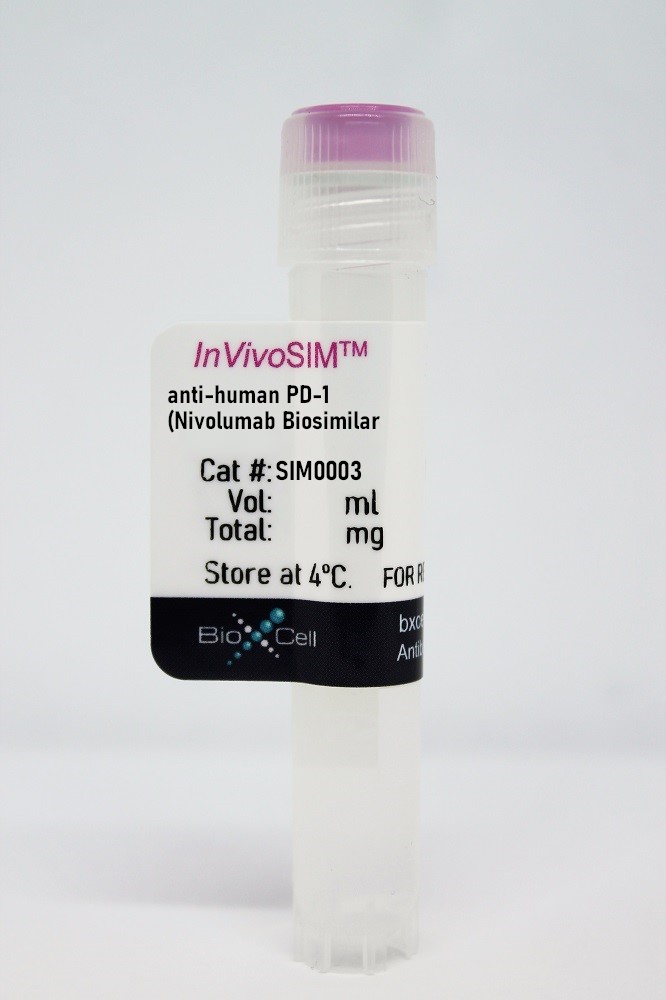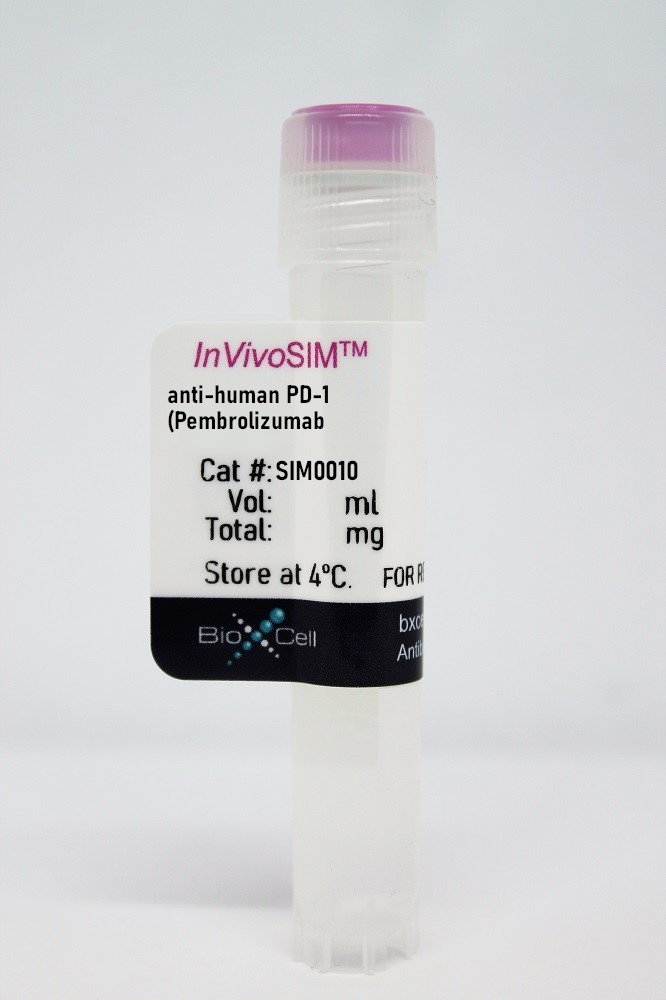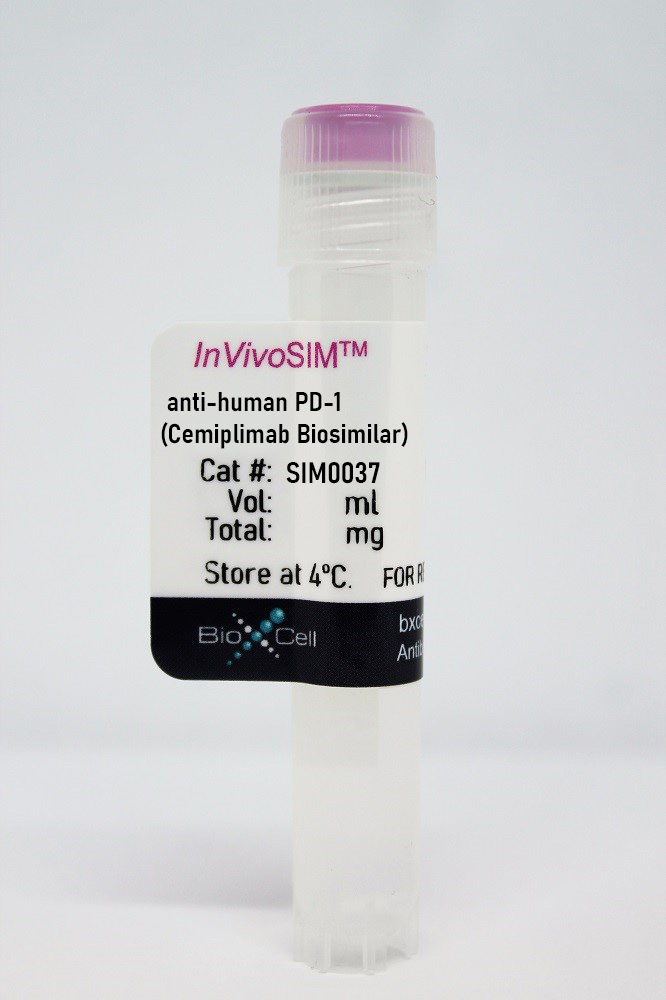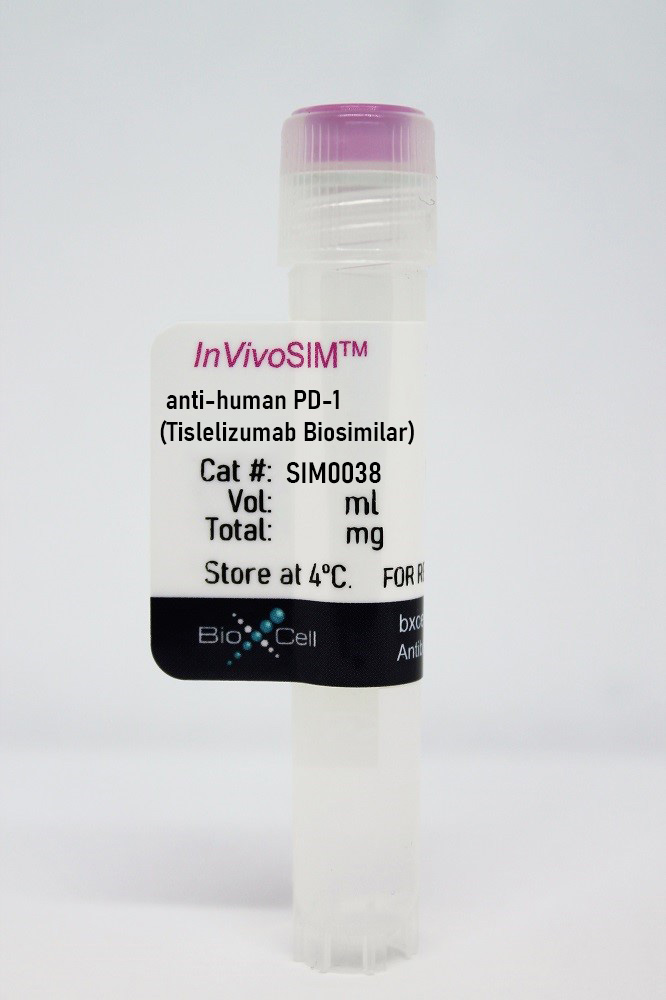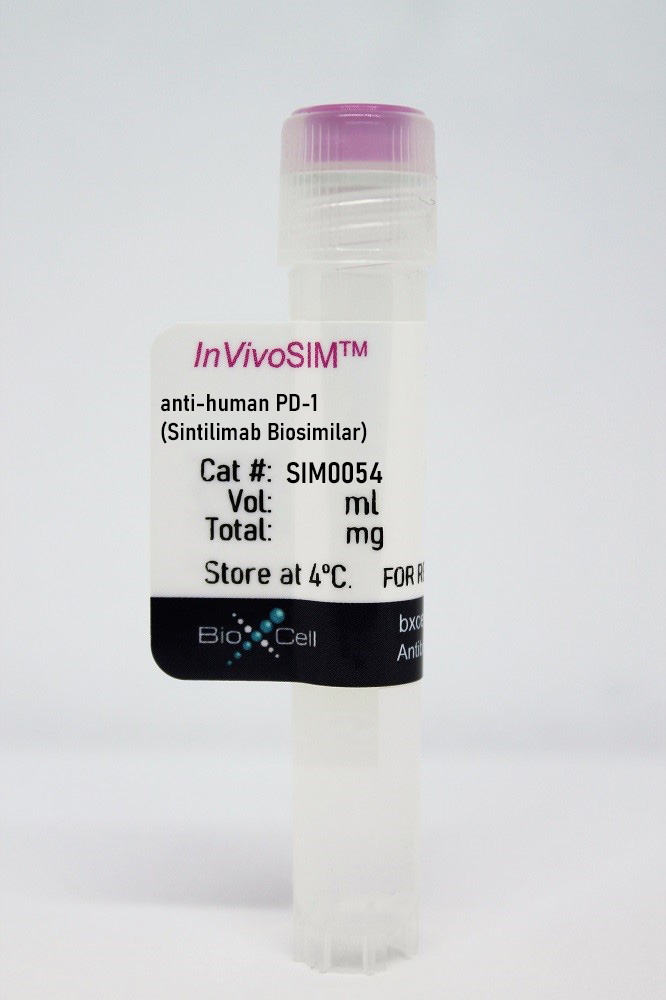RecombiMAb anti-mouse PD-1 (CD279) (D265A)
货号 #CP002
克隆号:
RMP1-14-CP002
反应种属:
Mouse
¥5,632 - ¥76,176
产品详情
The RMP1-14-CP002 monoclonal antibody is a chimeric version of the original RMP1-14 antibody. The variable domain sequences are identical to the original RMP1-14 but the constant region sequences have been switched from rat IgG2a to mouse IgG1. The RMP1-14-CP002 antibody also contains a D265A mutation in the Fc fragment rendering it unable to bind to endogenous Fcγ receptors. RMP1-14-CP002 reacts with mouse PD-1 (programmed death-1) also known as CD279. PD-1 is a 50-55 kDa cell surface receptor encoded by the Pdcd1 gene that belongs to the CD28 family of the Ig superfamily. PD-1 is transiently expressed on CD4 and CD8 thymocytes as well as activated T and B lymphocytes and myeloid cells. PD-1 expression declines after successful elimination of antigen. Additionally, Pdcd1 mRNA is expressed in developing B lymphocytes during the pro-B-cell stage. PD-1’s structure includes a ITIM (immunoreceptor tyrosine-based inhibitory motif) suggesting that PD-1 negatively regulates TCR signals. PD-1 signals via binding its two ligands, PD-L1 and PD-L2 both members of the B7 family. Upon ligand binding, PD-1 signaling inhibits T-cell activation, leading to reduced proliferation, cytokine production, and T-cell death. Additionally, PD-1 is known to play key roles in peripheral tolerance and prevention of autoimmune disease in mice as PD-1 knockout animals show dilated cardiomyopathy, splenomegaly, and loss of peripheral tolerance. Induced PD-L1 expression is common in many tumors including squamous cell carcinoma, colon adenocarcinoma, and breast adenocarcinoma. PD-L1 overexpression results in increased resistance of tumor cells to CD8 T cell mediated lysis. In mouse models of melanoma, tumor growth can be transiently arrested via treatment with antibodies which block the interaction between PD-L1 and its receptor PD-1. For these reasons anti-PD-1 mediated immunotherapies are currently being explored as cancer treatments.参数
| 同种型 | Mouse IgG1, κ |
|---|---|
| 推荐的同型对照 | RecombiMAb mouse IgG1 (D265A) isotype control, anti-hen egg lysozyme |
| 推荐稀释缓冲液 | InVivoPure pH 7.0 Dilution Buffer |
| 免疫原 | Syrian Hamster BKH cells transfected with mouse PD-1 cDNA |
| Reported Applications | in vivo blocking of PD-1/PD-L signaling* *Reported for the original rat IgG2a RMP1-14 antibody |
| 形式 | PBS, pH 7.0 Contains no stabilizers or preservatives |
| 内毒素 | <1EU/mg (<0.001EU/μg) Determined by LAL gel clotting assay |
| 聚合 | <5% Determined by SEC |
| 纯化 | >95% Determined by SDS-PAGE |
| 无菌性 | 0.2 μM filtration |
| 生产 | Purified from HEK293 cell supernatant in an animal-free facility |
| 提纯 | Protein G |
| 分子量 | 150 kDa |
| 小鼠病原体试验 | Mouse Norovirus: Negative Mouse Parvovirus: Negative Mouse Minute Virus: Negative Mouse Hepatitis Virus: Negative Reovirus Screen: Negative Lymphocytic Choriomeningitis virus: Negative Lactate Dehydrogenase-Elevating Virus: Negative Mouse Rotavirus: Negative Theiler's Murine Encephalomyelitis: Negative Ectromelia/Mousepox Virus: Negative Hantavirus: Negative Polyoma Virus: Negative Mouse Adenovirus: Negative Sendai Virus: Negative Mycoplasma Pulmonis: Negative Pneumonia Virus of Mice: Negative Mouse Cytomegalovirus: Negative K Virus: Negative |
| 保存 | The antibody solution should be stored at the stock concentration at 4°C. Do not freeze. |


